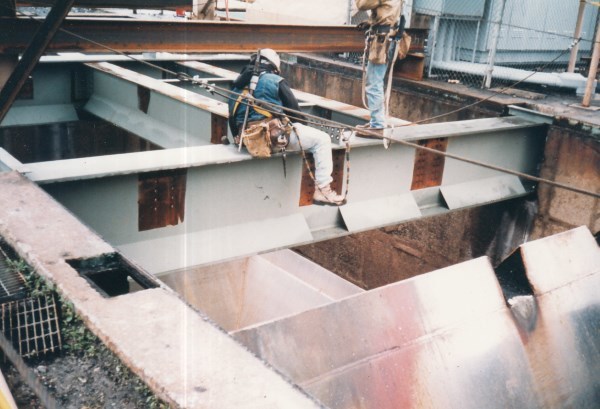I have a heavily loaded cantilever beam framing into a column with a bolted flange plate connection. The loading is pure gravity (no load reversals) and all holes are standard size. I am concerned about the potential additional deflection that may occur due to bolt slip. The cantilever beam supports two floors and excessive deflection may cause unacceptable slope to the floor and/or excessive cracking of the slab.
My questions are the following:
Are these type of connections usually specified as slip critical or bearing? What specific type of conditions or rules are used to determine whether these conditions should be designed as bearing or clip critical?
How much joint rotation would be expected due to bolt slip in bolted flange plate connections? Is there a reference/calculation/guide I could follow to calculate this?
If indeed slip critical designed bolts are recommended, are there some measures that could be undertaken to limit rotation without using slip critical bolts (for example increasing number of bolts)?
I apologize in advance if this question has already been asked somewhere. So far I was not able to find answers for this particular condition through searching the forum.
My questions are the following:
Are these type of connections usually specified as slip critical or bearing? What specific type of conditions or rules are used to determine whether these conditions should be designed as bearing or clip critical?
How much joint rotation would be expected due to bolt slip in bolted flange plate connections? Is there a reference/calculation/guide I could follow to calculate this?
If indeed slip critical designed bolts are recommended, are there some measures that could be undertaken to limit rotation without using slip critical bolts (for example increasing number of bolts)?
I apologize in advance if this question has already been asked somewhere. So far I was not able to find answers for this particular condition through searching the forum.

![[idea] [idea] [idea]](/data/assets/smilies/idea.gif)
![[r2d2] [r2d2] [r2d2]](/data/assets/smilies/r2d2.gif)
